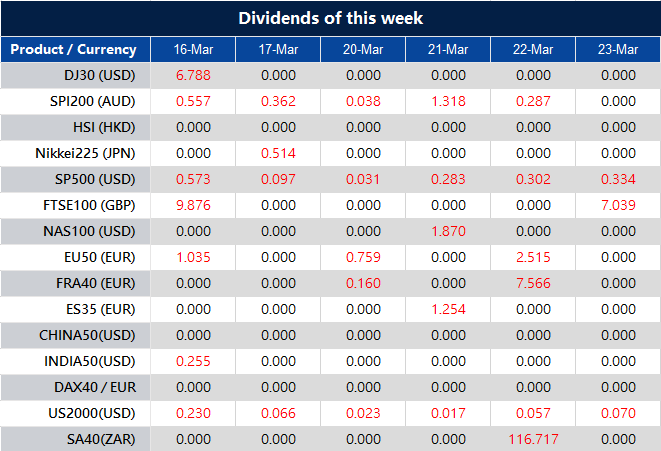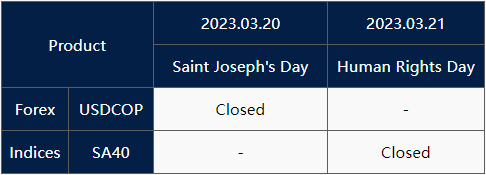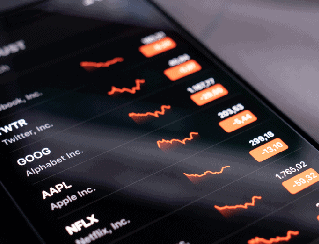On Thursday, US stocks saw a surge in prices following the announcement that a rescue package had been secured for First Republic Bank. This news sparked a rebound in shares of embattled regional lenders, which had previously tumbled more than 60% as investors speculated that the bank could be the next to fail after two high-profile demises touched off the crisis last week.
Regional banks closed higher after the biggest banks in the US agreed to contribute $30 billion in deposits to the First Republic. However, the gauge is still down over 20% this March. Despite this, nine out of eleven sectors of the S&P500 stayed in positive territory, showing that the market’s fear of the bank has been eased. In particular, the Information Technology and Communication Services sectors both rallied with more than 2.5% daily gains, surrounded by strong recovery momentum.

Meanwhile, the Dow Jones Industrial Average rose 1.2% and the MSCI world index earned 1.3% on Thursday. The S&P500 notched its largest one-day advance since January, and the Nasdaq 100 jumped 2.7% to a one-month high.

European Central Bank Rate Hike and Comments from ECB President
Markets were also digesting a European Central Bank rate hike and comments from the ECB president that inflation is projected to remain too high for too long. The interest rate decision of 50 basis points (bps) rate hike by the ECB has trimmed the Federal Reserve (Fed)-ECB policy divergence.
The US Dollar retreated with a 0.2% daily loss on Thursday, as major Wall Street banks pledged billions to rescue First Republic Bank, boosting the market risk sentiment. The DXY index was hovering in a range from 104.2 to 104.6 during most of Thursday, and the ECB interest rate decision failed to provide directional traction for the greenback.
The EURUSD rallied with a 0.31% daily gain on Thursday, remaining modestly upside during the US trading session and closing around the 1.0610 level. Meanwhile, the GBPUSD also rose with a 0.43% daily gain on Thursday, witnessing fresh transactions ahead of the American trading hour and closing at the 1.2108 level.
Gold Prices Remain Steady
The Gold market was little changed, up for the day due to the broadly weaker United States Treasury bond yield. Investors remained in a cautious mood ahead of next week’s FOMC monetary policy meeting. The XAUUSD witnessed heavy selling pressures during the American trading session, erasing most of the gains of the day and closing at the $1919 mark on Thursday.
Technical Analysis
EURUSD (4-Hour Chart)
The EUR/USD pair experienced a surge on Thursday, recovering from a monthly low of below 1.0530 that was reached the previous day, as market sentiment towards risk improved. The pair is currently trading at 1.0614, with a daily gain of 0.36%. The US dollar has weakened, as investors’ concerns regarding the banking system were somewhat alleviated after the Swiss National Bank (SNB) announced its plan to lend around $54 billion to Credit Suisse.
In the Eurozone, the European Central Bank (ECB) announced its expected rate hike of 50 basis points (bps) following the March policy meeting, resulting in a small rally for the Euro. However, the Euro’s strength was limited as ECB President Christine Lagarde stated that financial conditions were closely monitored, and the ECB refrained from signaling future interest rate moves.

From a technical perspective, the RSI indicator currently stands at 45, indicating that the pair has lost its upside momentum as the RSI is turning south below the mid-line. The price failed to maintain its upward momentum and has begun to fall, indicating that some downside movement is possible. Therefore, we believe that the market will remain bearish as long as the 1.0624 resistance line holds. Technical indicators have gained bearish traction within negative levels after correcting overbought conditions.
Resistance: 1.0624, 1.0685, 1.0745
Support: 1.0531, 1.0508, 1.0439
XAUUSD (4-Hour Chart)
The price of gold (XAU/USD) has decreased and is currently trading around $1,918, after failing to surpass the previous high of $1,937. This has been attributed to an improvement in market sentiment, as governments and central banks take steps to ensure the credibility of banks and prevent a severe crisis. The Swiss National Bank and the Swiss Financial Market Supervisory Authority have announced that Credit Suisse has met its capital requirements and that liquidity will be provided if necessary, which has brought relief to the market. The European Central Bank has also announced its monetary policy decision, raising interest rates by 50 basis points. President Christine Lagarde has stated that European banks are much stronger than in 2008.

In the short term, the XAU/USD pair has lost some of its bullish momentum, but there are no signs of an imminent decline. In the 4-hour chart, a bullish 20 SMA is providing dynamic support at around $1,910.25 while maintaining its upward slope well above the longer ones. The Momentum indicator is above its 100 level, while the RSI is retreating from overbought readings but remains well into positive territory, currently at 51.
Resistance: 1924, 1947, 1956
Support: 1900, 1885, 1859
Economic Data
| Currency | Data | Time (GMT + 8) | Forecast |
| EUR | CPI (YoY) (Feb) | 18:00 | 8.5% |
| RUB | Interest Rate Decision (Mar) | 18:30 | 7.5% |




























